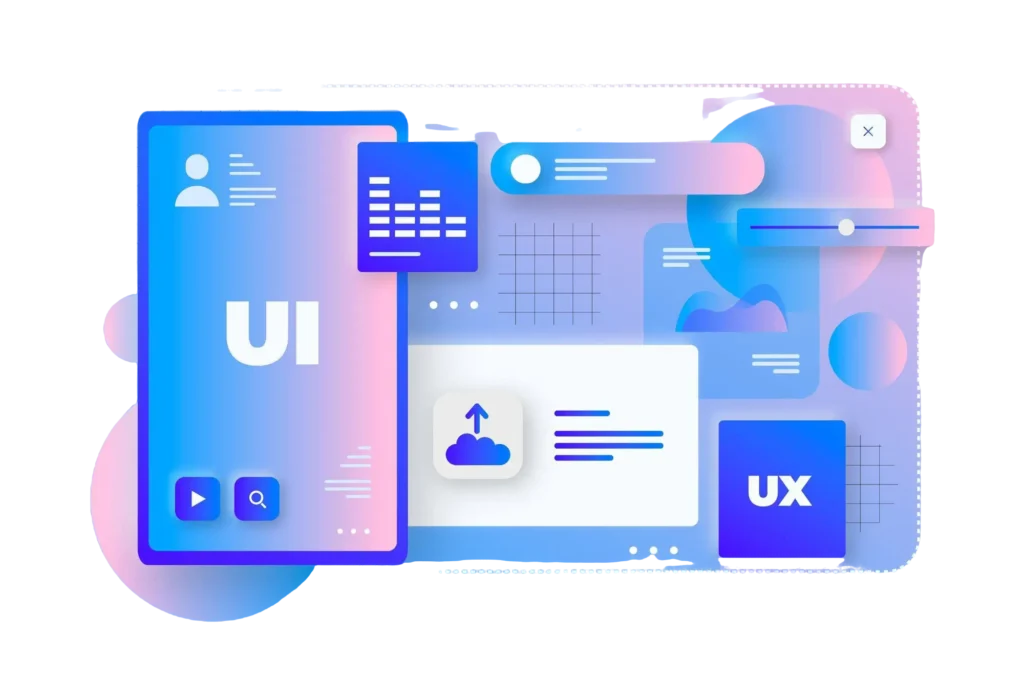The Future of Custom Web Applications: Trends and Innovations

In today’s digital age, the key to business success often lies in the ability to adapt and innovate. Custom web applications are at the forefront of this transformation, offering tailor-made solutions that cater to the unique needs of businesses. Unlike generic off-the-shelf software, these applications are designed to tackle specific challenges and boost operational efficiency. With rapid technological advancements, the future of custom web applications is brimming with possibilities. This article aims to explore these emerging trends and innovations, providing small businesses, IT professionals, and entrepreneurs with actionable insights to stay ahead in the competitive market.
Definition and Importance
Custom web applications are bespoke software solutions created to address the specific needs of an organization. They are crucial for businesses seeking to streamline operations, improve customer engagement, and maintain a competitive edge. Unlike generic software, custom web applications offer flexibility and scalability, allowing businesses to integrate new features as they grow.
For small businesses and entrepreneurs, custom web applications represent an opportunity to stand out in a crowded marketplace. By tailoring digital solutions to their unique needs, businesses can enhance productivity and deliver superior customer experiences. In an era where personalization is key, custom web applications provide the tools to meet these demands effectively.
Differences Between Custom and Off-the-Shelf Solutions
The primary distinction between custom web applications and off-the-shelf solutions lies in their adaptability. Off-the-shelf software offers a one-size-fits-all approach, which may not align with the specific workflows and processes of every organization. While these solutions can be cost-effective initially, they often require extensive modifications to meet evolving business needs.
Conversely, custom web applications are designed with flexibility at their core. They offer a tailored experience, ensuring seamless integration with existing systems and workflows. This adaptability not only enhances user satisfaction but also future-proofs the business against changing market dynamics. For IT professionals, custom web applications allow for greater control over security, functionality, and user experience.

The Rise of Progressive Web Applications (PWAs)
What Are PWAs?
Progressive Web Applications (PWAs) are a hybrid of traditional web pages and mobile applications. They offer the best of both worlds, delivering a fast, reliable, and engaging user experience across all devices. Built using web technologies such as HTML, CSS, and JavaScript, PWAs are designed to function seamlessly both online and offline.
For businesses, PWAs present an opportunity to expand their reach without the costs associated with native mobile app development. They are accessible through a web browser, eliminating the need for users to download and install apps from an app store. This convenience translates to higher user engagement and retention.
Benefits of PWAs
PWAs offer numerous advantages, making them an attractive option for businesses looking to enhance their digital presence. One of the key benefits is improved performance. PWAs load instantly and offer a smooth, app-like experience, even in low network conditions. This speed translates to higher user engagement and satisfaction.
Another advantage of PWAs is their cost-effectiveness. Developing a single PWA that works across all platforms is more economical than creating separate native apps for iOS and Android. Additionally, PWAs offer enhanced security, as they are served over HTTPS, ensuring data integrity and confidentiality.
Case Studies of Successful PWAs
Several companies have successfully implemented PWAs, reaping significant benefits. For instance, Twitter Lite, a PWA version of the popular social media platform, achieved a 65% increase in pages per session, a 75% increase in tweets sent, and a 20% decrease in bounce rate. These improvements highlight the potential of PWAs to enhance user engagement and drive business growth.
Similarly, Alibaba, the global e-commerce giant, experienced a 76% increase in conversions after launching its PWA. By providing a fast and reliable user experience, Alibaba was able to boost its mobile traffic and improve overall customer satisfaction. These examples underscore the growing importance of PWAs in the digital landscape.

AI and Machine Learning Integration
Overview of AI and ML
Artificial Intelligence (AI) and Machine Learning (ML) are revolutionizing the way businesses operate, offering powerful tools for data analysis, automation, and personalization. AI refers to the simulation of human intelligence processes by machines, while ML is a subset of AI that focuses on learning from data to make predictions and decisions.
In the realm of custom web applications, AI and ML are transforming how businesses interact with customers and optimize their operations. From chatbots and virtual assistants to predictive analytics and recommendation engines, these technologies are enhancing user experiences and driving efficiency.
Personalization and User Experience
One of the most significant applications of AI and ML in web development is personalization. By analyzing user data, AI-powered applications can tailor content and recommendations to individual preferences, creating a more engaging and relevant user experience. This level of personalization fosters customer loyalty and increases conversion rates.
For example, streaming services like Netflix use AI algorithms to recommend content based on viewing history and preferences. This personalized approach not only keeps users engaged but also encourages them to explore new content, leading to increased user retention.
Automation of Business Processes
AI and ML are also streamlining business processes by automating routine tasks and improving decision-making. From data entry and inventory management to customer support and fraud detection, AI-powered solutions are enhancing efficiency and reducing operational costs.
For instance, chatbots equipped with natural language processing (NLP) capabilities can handle customer inquiries 24/7, providing instant support and freeing up human agents to focus on more complex issues. This automation improves response times and customer satisfaction while reducing the workload on support teams.
Examples of AI-Powered Applications
Several industries are leveraging AI-powered applications to drive innovation and growth. In the healthcare sector, AI is being used to analyze medical images, predict patient outcomes, and develop personalized treatment plans. Similarly, in finance, AI algorithms are used for risk assessment, fraud detection, and algorithmic trading.
Retailers are also adopting AI to enhance the shopping experience. By analyzing customer data, AI-powered recommendation engines suggest products that align with individual preferences, increasing the likelihood of purchase. These applications demonstrate the transformative potential of AI in various business functions.

Low-Code/No-Code Development Platforms
Definition and Features
Low-code/no-code development platforms empower non-technical users to create custom web applications without extensive coding knowledge. These platforms provide intuitive interfaces and drag-and-drop functionality, enabling users to build applications quickly and efficiently.
For small businesses and entrepreneurs, low-code/no-code platforms offer a cost-effective solution to develop digital solutions tailored to their needs. By eliminating the need for specialized technical skills, these platforms democratize application development and foster innovation.
Advantages of Using Low-Code/No-Code
One of the primary advantages of low-code/no-code platforms is speed. Traditional development processes can be time-consuming and resource-intensive. In contrast, low-code/no-code platforms accelerate development timelines, allowing businesses to bring products to market faster.
Another benefit is flexibility. These platforms enable rapid prototyping and iteration, allowing businesses to adapt to changing market demands and customer feedback. This agility is crucial in today’s fast-paced business environment, where the ability to pivot quickly can be a competitive advantage.
Popular Platforms and Their Use Cases
Several low-code/no-code platforms have gained popularity for their ease of use and versatility. For example, Bubble is a visual development platform that allows users to create fully functional web applications without writing code. It is widely used by startups and small businesses to build prototypes and MVPs (minimum viable products).
Similarly, OutSystems is a low-code platform that offers a comprehensive set of tools for enterprise-grade application development. It is favored by larger organizations for its scalability and integration capabilities, enabling businesses to connect with existing systems and databases seamlessly.

Enhanced Security Features
Importance of Security in Web Applications
Security is a critical consideration in web application development, as data breaches and cyberattacks can have severe consequences for businesses and their customers. With the increasing reliance on digital solutions, ensuring the security and integrity of web applications is paramount.
For small businesses and entrepreneurs, robust security measures protect sensitive customer data and build trust with users. By implementing best practices and leveraging advanced security features, businesses can safeguard their applications and maintain a competitive edge in the market.
Common Security Threats
Web applications face a range of security threats, including SQL injection, cross-site scripting (XSS), and distributed denial-of-service (DDoS) attacks. These vulnerabilities can be exploited by malicious actors to gain unauthorized access to data, disrupt services, or compromise the integrity of an application.
To mitigate these threats, businesses must adopt a proactive approach to security, incorporating regular vulnerability assessments, penetration testing, and code reviews. By identifying and addressing potential weaknesses, businesses can protect their applications from evolving cyber threats.
Best Practices for Securing Custom Web Applications
Securing custom web applications requires a multi-layered approach, encompassing a combination of technical measures and organizational practices. Key best practices include implementing secure coding practices, encrypting sensitive data, and using multi-factor authentication (MFA) to verify user identities.
Additionally, businesses should prioritize security awareness training for employees, fostering a culture of vigilance and responsibility. By educating staff on the importance of security and best practices, businesses can reduce the risk of human error and insider threats.

Regulatory Compliance and Its Impact
In addition to technical measures, regulatory compliance is a key consideration in web application development. Businesses must adhere to industry-specific regulations and standards to ensure the security and privacy of user data. For example, organizations handling personal data must comply with the General Data Protection Regulation (GDPR) to protect user privacy.
Compliance with these regulations demonstrates a commitment to data protection and builds trust with customers. Furthermore, non-compliance can result in significant financial penalties and reputational damage, underscoring the importance of prioritizing security in web application development.
API-Driven Development
Understanding APIs
Application Programming Interfaces (APIs) are a set of protocols and tools that enable different software applications to communicate with each other. APIs play a crucial role in modern web development, facilitating seamless integration between various systems and services.
For businesses, APIs offer the flexibility to connect with third-party services, extend the functionality of existing applications, and streamline data exchange. This interoperability enhances the overall efficiency of business processes and drives innovation.
The Role of APIs in Modern Applications
APIs serve as the building blocks of modern applications, enabling businesses to leverage external services and data sources. By integrating APIs, businesses can enhance the capabilities of their applications and deliver more comprehensive solutions to users.
For example, e-commerce platforms use payment gateway APIs to facilitate secure transactions, while social media applications use APIs to enable sharing and authentication. By leveraging APIs, businesses can create more connected and dynamic applications that enhance the user experience.
Benefits of API-First Development
Adopting an API-first approach to development offers several benefits for businesses. By designing applications with APIs at the core, businesses can ensure greater flexibility and scalability, allowing for seamless integration with future technologies and services.
An API-first strategy also accelerates the development process, enabling parallel development of front-end and back-end components. This approach fosters collaboration between development teams and reduces time-to-market, allowing businesses to respond quickly to changing market demands.
Real-World Examples of API Use
Several industries have embraced API-driven development to enhance their digital offerings. In the travel sector, APIs enable seamless integration between airlines, hotels, and travel agencies, providing users with a unified booking experience.
Similarly, in finance, open banking APIs allow third-party developers to access financial data, enabling the creation of innovative services such as budgeting apps and investment platforms. These examples demonstrate the transformative potential of APIs in driving innovation and improving user experiences.
Real-Time Data Processing
The Need for Speed in Web Applications
In today’s fast-paced digital landscape, users expect instant access to information and services. Real-time data processing is essential for delivering these seamless and responsive experiences, enabling businesses to meet user demands and stay competitive.
For small businesses and entrepreneurs, real-time data processing offers the ability to make informed decisions quickly, respond to market changes, and deliver personalized experiences. By leveraging real-time insights, businesses can enhance user engagement and drive growth.
Technologies Enabling Real-Time Processing
Several technologies enable real-time data processing in web applications, including in-memory databases, event streaming platforms, and serverless computing. These technologies facilitate the rapid ingestion, analysis, and delivery of data, ensuring timely and relevant user experiences.
For example, Apache Kafka is a popular event streaming platform used by businesses to process and analyze large volumes of data in real time. By leveraging these technologies, businesses can unlock new opportunities for innovation and differentiation.
Applications of Real-Time Data
Real-time data processing has numerous applications across various industries. In finance, real-time data enables algorithmic trading, fraud detection, and risk management, allowing businesses to respond to market fluctuations and emerging threats swiftly.
In e-commerce, real-time data powers personalized recommendations, dynamic pricing, and inventory management, enhancing the overall shopping experience. By harnessing real-time insights, businesses can optimize operations and deliver exceptional user experiences.

User Experience (UX) and User Interface (UI) Design Trends
Importance of UX/UI in Custom Applications
User experience (UX) and user interface (UI) design are critical components of custom web applications, influencing user satisfaction and engagement. A well-designed application ensures a seamless and intuitive user experience, fostering customer loyalty and retention.
For businesses, investing in UX/UI design is essential for differentiating their offerings and delivering superior user experiences. By prioritizing usability and accessibility, businesses can enhance the overall effectiveness of their applications and drive growth.
Key Design Principles
Several key design principles underpin successful UX/UI design, including simplicity, consistency, and accessibility. By adhering to these principles, businesses can create intuitive and user-friendly applications that meet the needs and expectations of their users.
Simplicity involves minimizing complexity and focusing on essential features, ensuring a straightforward user experience. Consistency ensures uniformity in design elements, enhancing usability and reducing cognitive load. Accessibility ensures that applications are inclusive and usable by all users, regardless of their abilities.
Emerging Trends in UX/UI Design
Several emerging trends are shaping the future of UX/UI design, including the use of micro-interactions, voice user interfaces, and immersive experiences. Micro-interactions enhance user engagement by providing subtle feedback and guidance, creating a more interactive and dynamic experience.
Voice user interfaces enable users to interact with applications through voice commands, offering a more natural and intuitive experience. Immersive experiences, such as augmented reality (AR) and virtual reality (VR), provide users with new ways to engage with digital content, enhancing the overall user experience.

Integration with IoT (Internet of Things)
Understanding IoT and Its Relevance
The Internet of Things (IoT) refers to the network of interconnected devices that communicate and exchange data over the internet. IoT is transforming various industries, offering new opportunities for innovation and growth. For businesses, integrating IoT with custom web applications enables the collection and analysis of real-time data, enhancing decision-making and operational efficiency.
By leveraging IoT, businesses can create more connected and intelligent applications that deliver value to users. From smart homes and wearable devices to industrial automation and supply chain management, IoT offers a wealth of possibilities for businesses to explore.
How Custom Web Applications Can Leverage IoT
Custom web applications can leverage IoT to enhance functionality and deliver new capabilities to users. By integrating IoT devices, businesses can collect and analyze data in real time, enabling more informed decision-making and personalized experiences.
For example, in the healthcare sector, IoT-enabled applications can monitor patient vital signs and provide real-time alerts to medical professionals, improving patient outcomes and reducing response times. Similarly, in manufacturing, IoT can optimize production processes and improve equipment maintenance, enhancing overall efficiency.
Case Studies of IoT-Enabled Applications
Several businesses have successfully integrated IoT with custom web applications, achieving significant benefits. For instance, smart home companies like Nest use IoT to connect devices such as thermostats, cameras, and smoke detectors, providing users with a seamless and automated experience.
In agriculture, IoT-enabled applications are used to monitor soil conditions, weather patterns, and crop health, enabling farmers to make data-driven decisions and optimize yields. These case studies highlight the potential of IoT to drive innovation and improve business outcomes.

Future Technologies Impacting Web Applications
Blockchain Technology
Blockchain technology is transforming various industries by offering a secure and transparent method for recording transactions and data. For custom web applications, blockchain can enhance security, streamline processes, and enable new business models.
By leveraging blockchain, businesses can create decentralized applications that ensure data integrity and protect against fraud. For example, in finance, blockchain enables secure and transparent transactions, reducing the risk of fraud and improving trust between parties.
5G Connectivity
5G connectivity is set to revolutionize the digital landscape by offering faster and more reliable internet speeds. For custom web applications, 5G enables real-time data processing, enhanced user experiences, and seamless integration with IoT devices.
With 5G, businesses can deliver high-quality, low-latency experiences to users, enhancing engagement and satisfaction. This connectivity will drive the adoption of emerging technologies such as AR and VR, creating new opportunities for innovation and differentiation.
Quantum Computing
Quantum computing represents the next frontier in computing, offering unparalleled processing power and problem-solving capabilities. While still in its early stages, quantum computing has the potential to revolutionize various industries, including web development.
For custom web applications, quantum computing could enable breakthroughs in data analysis, optimization, and encryption. By harnessing the power of quantum computing, businesses can tackle complex challenges and unlock new possibilities for growth and innovation.

Conclusion Preparing for the Future
The future of custom web applications is filled with exciting opportunities for businesses to innovate and thrive. By staying informed about emerging trends and technologies, businesses can position themselves for success in an increasingly competitive market.
To prepare for the future, businesses should prioritize flexibility, security, and user experience in their web applications. By adopting a proactive approach to technological advancements, businesses can deliver superior solutions that meet the evolving needs of their users.
For small businesses, IT professionals, and entrepreneurs, the future holds immense potential for growth and transformation. By leveraging the power of custom web applications, businesses can unlock new opportunities, enhance operational efficiency, and deliver exceptional experiences to their customers.



